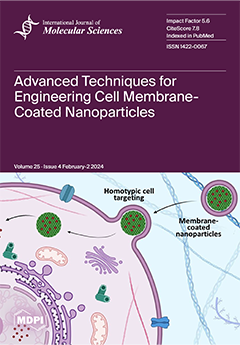Metabolic dysfunction-associated steatotic liver disease (MASLD) and its advanced subtype, metabolic dysfunction-associated steatohepatitis (MASH), have emerged as the most common chronic liver disease worldwide, yet there is no targeted pharmacotherapy presently available. This study aimed to investigate the possible in vivo function of
[...] Read more.
Metabolic dysfunction-associated steatotic liver disease (MASLD) and its advanced subtype, metabolic dysfunction-associated steatohepatitis (MASH), have emerged as the most common chronic liver disease worldwide, yet there is no targeted pharmacotherapy presently available. This study aimed to investigate the possible in vivo function of STE20-type protein kinase MST4, which was earlier implicated in the regulation of hepatocellular lipotoxic milieu in vitro, in the control of the diet-induced impairment of systemic glucose and insulin homeostasis as well as MASLD susceptibility. Whole-body and liver-specific
Mst4 knockout mice were generated by crossbreeding conditional
Mst4fl/fl mice with mice expressing Cre recombinase under the
Sox2 or
Alb promoters, respectively. To replicate the environment in high-risk subjects,
Mst4–/– mice and their wild-type littermates were fed a high-fat or a methionine–choline-deficient (MCD) diet. Different in vivo tests were conducted in obese mice to describe the whole-body metabolism. MASLD progression in the liver and lipotoxic damage to adipose tissue, kidney, and skeletal muscle were analyzed by histological and immunofluorescence analysis, biochemical assays, and protein and gene expression profiling. In parallel, intracellular fat storage and oxidative stress were assessed in primary mouse hepatocytes, where MST4 was silenced by small interfering RNA. We found that global MST4 depletion had no effect on body weight or composition, locomotor activity, whole-body glucose tolerance or insulin sensitivity in obese mice. Furthermore, we observed no alterations in lipotoxic injuries to the liver, adipose, kidney, or skeletal muscle tissue in high-fat diet-fed whole-body
Mst4–/– vs. wild-type mice. Liver-specific
Mst4–/– mice and wild-type littermates displayed a similar severity of MASLD when subjected to an MCD diet, as evidenced by equal levels of steatosis, inflammation, hepatic stellate cell activation, fibrosis, oxidative/ER stress, and apoptosis in the liver. In contrast, the in vitro silencing of MST4 effectively protected primary mouse hepatocytes against ectopic lipid accumulation and oxidative cell injury triggered by exposure to fatty acids. In summary, these results suggest that the genetic ablation of MST4 in mice does not mitigate the initiation or progression of MASLD and has no effect on systemic glucose or insulin homeostasis in the context of nutritional stress. The functional compensation for the genetic loss of MST4 by yet undefined mechanisms may contribute to the apparent discrepancy between in vivo and in vitro phenotypic consequences of MST4 silencing.
Full article






